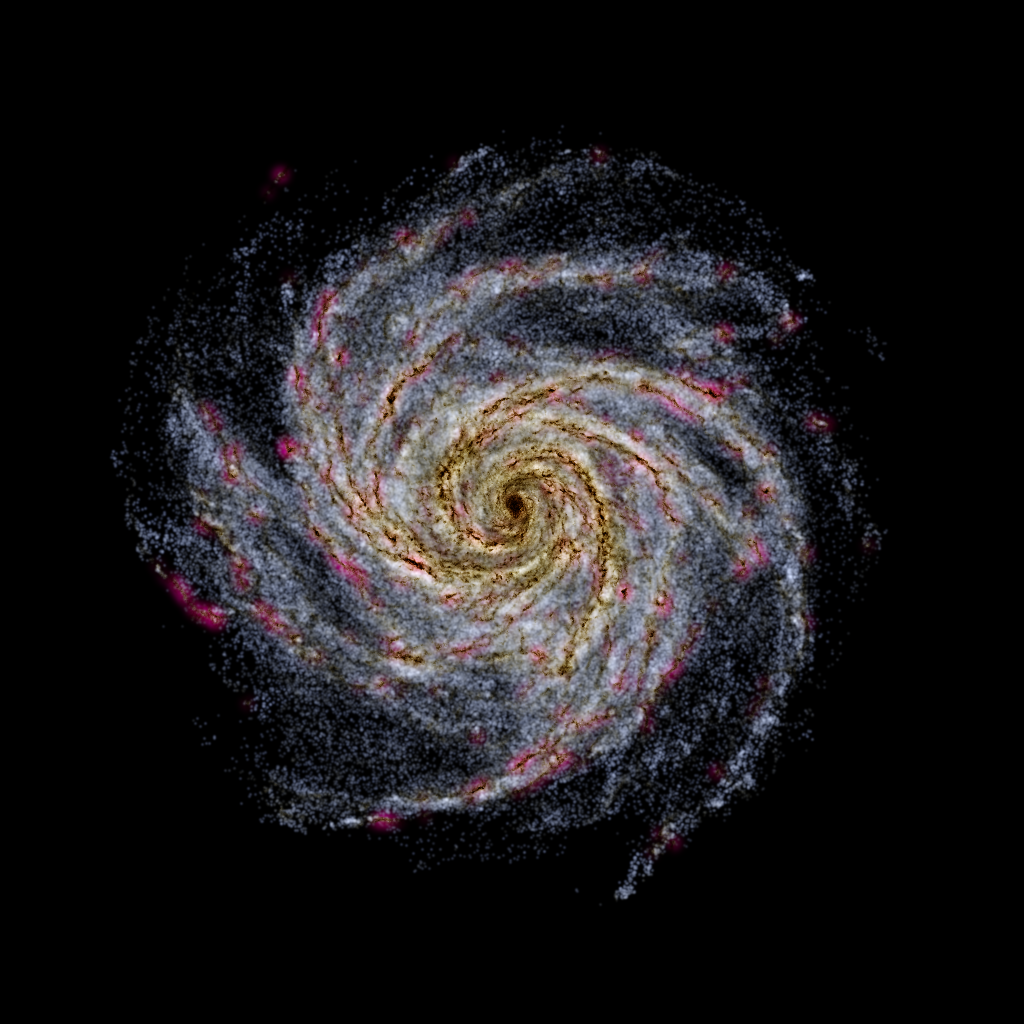Dwarf models¶
mockimgs_generate_dwarf is a script that allows to generate spheroidal dwarf models.
In a fitrs step, from a given total quantity of stellar mass, in solar unit, formed (e.g. --M0 1e4),
the script generates a corresponding quantity of individual stars with some individual metallicityies and ages.
In a second step, the script uses an isochrone database to find the magnitude in some bands
(e.g. --filters_keys VISmag Ymag Jmag) and luminosities (--logL 'logL')
of each individual stars. Only stars that did not exploded yet, according to the lifetimes stored in the
isochrone database, are considered.
If the option --filters_names MagVIS MagY MagJ is provided,
the final output will be an n-nbody file with magnitudes for each star stored as:
nb.MagVIS
nb.MagY
nb.MagJ
mockimgs_generate_dwarf¶
usage: mockimgs_generate_dwarf [-h] [-o OUTPUTFILENAME] [-d DIRECTORY]
[-f FILENAME] [--info] [--seed INT]
[--imf STRING] [--minAge FLOAT]
[--maxAge FLOAT] [--minFe FLOAT]
[--maxFe FLOAT] [--logL STRING]
[--filters_keys [STRING ...]]
[--filters_names [STRING ...]] [--M0 FLOAT]
[--MassFactor FLOAT] [-e FLOAT]
[--rmax_e_ratio FLOAT] [--ftype FTYPE]
[--do_not_compute_rsp] [--nngb NNGB]
[--inidividual_stars] [-N INT]
generate a dwarf galaxy
By default, a density profile is generated with N particles having a mass M0/N.
If --inidividual_stars is specified, particles will represent individual stars with a given age and mass obtained
from a distribution.
To get the stellar masses, by default, the Kroupa 2001 IMF is used. It can be changed to anything providing a parameter file containing
the IMF parametrisation:
params = {}
params["Mmax"] = 50.
params["Mmin"] = 0.05
params["as"] = [0.7,-0.8,-1.7,-1.3]
params["ms"] = [0.08,0.5,1.0]
where ``as`` is the slope of the IMF in the mass intervals ``ms`` given is solar masses.
options:
-h, --help show this help message and exit
-o OUTPUTFILENAME Name of the output file
-d DIRECTORY a directory (default=None)
-f FILENAME the name of isochrones database file
--info get info (list of keys) and exit.
--seed INT random seed
--imf STRING a file containing the IMF parameters
--minAge FLOAT minAge
--maxAge FLOAT maxAge
--minFe FLOAT minFe
--maxFe FLOAT maxFe
--logL STRING field name for logL
--filters_keys [STRING ...]
the filters keys as stored in the database
--filters_names [STRING ...]
the filters names as stored in the output n-body file
--M0 FLOAT stellar mass to generate [Msol]
--MassFactor FLOAT Mass factor (to the the correct final luminosity)
-e FLOAT scale length [kpc]
--rmax_e_ratio FLOAT rmax to scale length ratio
--ftype FTYPE type of file
--do_not_compute_rsp do not compute rsp
--nngb NNGB Number of neighbouring particles to consider to
compute RSP(==HSML)
--inidividual_stars sample individual stars
-N INT number of particles
Examples:
--------
# particles representing SSP
mockimgs_generate_dwarf --M0 1e4 -e 0.1 -N 1000000 --minFe -4 --maxFe -2 --minAge 12500 --maxAge 13500 -o 1e4.hdf5
# particles representing individual stars
mockimgs_generate_dwarf --inidividual_stars --minFe -4 --maxFe -2 --minAge 12500 --maxAge 13500 --M0 1e4 -e 0.1 -f CMD_Euclid.dat --logL 'logL' -o 1e4.hdf5 --filters_keys VISmag Ymag Jmag --filters_names MagVIS MagY MagJ
mockimgs_generate_dwarf --inidividual_stars --minFe -4 --maxFe -2 --minAge 12500 --maxAge 13500 --M0 1e4 -e 0.1 -d P04O1D1E1Y247 -o 1e4.hdf5 --filters_keys r g --filters_names Magr Magg
mockimgs_generate_dwarf --inidividual_stars --minFe -4 --maxFe -2 --minAge 12500 --maxAge 13500 --M0 1e4 -e 0.1 -d P04O1D1E1Y247 -o 1e4.hdf5 --imf imf.py --filters_keys r g --filters_names Magr Magg
